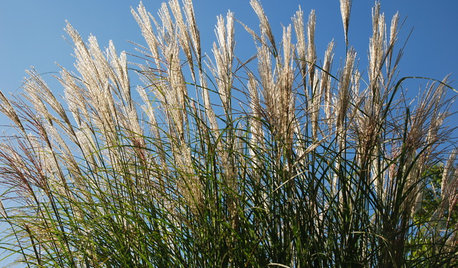Plant Parents Please Help!
Monica
3 years ago
Related Stories

GARDENING GUIDESGreat Design Plant: Ceanothus Pleases With Nectar and Fragrant Blooms
West Coast natives: The blue flowers of drought-tolerant ceanothus draw the eye and help support local wildlife too
Full Story
GARDENING GUIDESGreat Design Plant: Silphium Perfoliatum Pleases Wildlife
Cup plant provides structure, cover, food and water to help attract and sustain wildlife in the eastern North American garden
Full Story
GARDENING GUIDES6 New Plant Varieties That Beat Out Their Parents
With better resistance and fewer demands, these garden beauties are worth a spot on your wish list
Full Story
FLOWERS AND PLANTSHelp Monarchs and Other Butterflies by Planting Common Milkweed
Summer-blooming Asclepias syriaca is an important larval host plant for the monarch butterfly and attracts a number of pollinating insects
Full Story
LIFEConsider Avoiding These Plants to Help Keep Your Garden Fire-Safe
Plants that accumulate dead material, are high in oil or have low moisture content in leaves put some homes at risk
Full Story
GARDENING GUIDESGreat Design Plant: Snowberry Pleases Year-Round
Bright spring foliage, pretty summer flowers, white berries in winter ... Symphoricarpos albus is a sight to behold in every season
Full Story
GARDENING GUIDES8 Unthirsty Plants Help You Save Water in Style
Spend less effort and money on your landscape with drought-tolerant and native plants that liven up your yard
Full Story
GARDENING GUIDESHelp Fuel the Monarch Migration With These 6 Prairie Plants
Try these nectar-rich beauties and help autumn monarchs
Full Story
GARDENING GUIDESPathway Plantings That Please the Senses
Add some color, life and intrigue beside your sidewalk with these 7 suggestions
Full Story
GARDENING GUIDESInvite Mining Bees to Your Garden by Planting Their Favorite Plants
Look for mining bees (Andrena) pollinating woodland wildflowers in U.S. gardens this spring
Full Story








Need2SeeGreen 10 (SoCal)
User
Related Professionals
Surprise Landscape Architects & Landscape Designers · Boca Raton Landscape Contractors · Wells Landscape Contractors · Hueytown Landscape Contractors · Lake Oswego Landscape Architects & Landscape Designers · Marina Landscape Architects & Landscape Designers · East Lake-Orient Park Landscape Contractors · Louisville Landscape Contractors · West Orange Landscape Contractors · Lincolnwood Siding & Exteriors · New Britain Siding & Exteriors · Wethersfield Siding & Exteriors · Auburn Decks, Patios & Outdoor Enclosures · Salt Lake City Decks, Patios & Outdoor Enclosures · Tomball Decks, Patios & Outdoor EnclosuresMonicaOriginal Author
tapla (mid-Michigan, USDA z5b-6a)
ken_adrian Adrian MI cold Z5
MonicaOriginal Author
tapla (mid-Michigan, USDA z5b-6a)
MonicaOriginal Author
MonicaOriginal Author